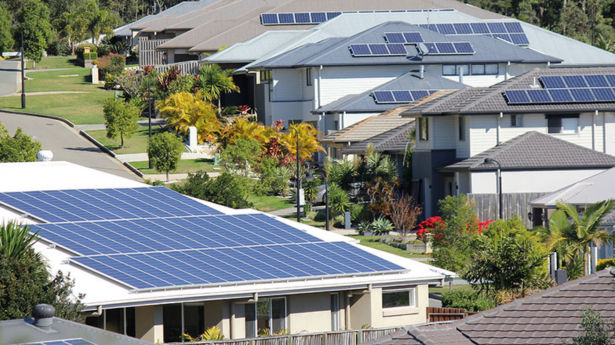If you’re weighing up buying commercial vs. residential property in your SMSF, you’re asking one of the key questions many Australian investors face when utilizing a self-managed super fund. It’s not necessarily about “which asset class is better,” but “which option best aligns with my retirement goals, fund size, cash-flow needs, and compliance obligations?” In this article, I will step you through the key differences between residential property and commercial property within an SMSF. I will outline how they fare financially; explain what the rules require; and help you determine which route may be smarter for your strategy.
Understanding the difference: SMSF residential property vs commercial property
When investing through an SMSF, the options are residential and commercial property, but they come with some very different features. A residential property in an SMSF-for example, a house, unit, or townhouse-can only be acquired at arm’s length, not lived in or leased to a member or relative, and must strictly adhere to the fund’s investment strategy. Meanwhile, commercial property-office, retail, warehouse-may well deliver greater flexibility: for example, a business you own can lease the property from the SMSF at a market rate, which is not allowed in residential scenarios. On the upside, residential investments tend to feel more familiar and accessible for many trustees, while commercial investments may offer stronger income opportunities but also greater complexity: tenants, property management, higher vacancy risk.
Financial implications and performance — rental yield, capital growth, cash-flow
The financial return and risk are some of the biggest drivers of the decision. In general, commercial property in an SMSF offers higher rental yields than a residential one; for instance, some commercial-SMSF loans articles suggest commercial yields may be stronger, and residential may suffer from oversupply. That said, residential property tends to be more liquid, may have broader tenant demand, and historically has strong capital growth potential in growth suburbs. It is estimated that approximately 16-17% of SMSF assets comprise direct property holdings in Australia. It is also essential to assess cash flow: if your SMSF takes on a property loan, often a limited-recourse borrowing arrangement, or LRBA, the rental income must cover not just repayments but also the cost of rates, insurance, maintenance, and compliance. Hence, while commercial may offer a higher yield, it may also carry higher vacancy risk and management overhead, with residential offering steadiness but at a lower yield. Matching the returns to your fund’s balance, risk tolerance, and timeframe requires choosing between them.

Compliance and leasing rules — what the ATO requires
Another important dimension is compliance. The ATO has stiff rules around SMSF investment in property. For residential property, for instance, you are not allowed to buy the residential property from a related party, or live in it or rent it to a relative, and it needs to be an investment only. There is greater flexibility with commercial property: you may be able to rent it to a related party-your business-provided that lease is at market rate and the property satisfies the “sole purpose test”. From a risk perspective, non-compliance can result in punitive outcomes: loss of tax concessions, penalties, or forced asset sales. So, the rulebook here needs to be right at the forefront of your decision-making. If you opt for commercial, you will need to evaluate lease terms, tenant strength, property management, and risk of vacancy; if you decide on residential, you must make sure the property is absolutely at arm’s length and the fund remains compliant with all laws and regulations.
Which option suits your SMSF strategy and risk profile?
The question of commercial vs. residential for an SMSF is not one-size-fits-all. If you run your own business and are able to lease your commercial premises to your SMSF at market rate, the commercial route may increase income and connect your business AND retirement strategy. Alternatively, if your SMSF has a modest balance or you prefer less complexity, residential property may be more suitable. Consider the following:
- Fund balance and liquidity: Smaller funds may find that commercial property entails much higher upfront costs with a subsequently higher risk.
- Time horizon: If you’re far from retirement, capital growth may matter more; residential may suit.
- Risk appetite: Commercial can offer higher yield but also higher risk due to vacancy and tenant default.
- Tenancy/usage model: Can your business lease from the SMSF? That only works with commercials.
- Diversification: Does your SMSF already hold other assets and need property simply for diversification? Then residential could be easier.
By aligning your choice with these criteria, you’ll increase the chances of a successful outcome.
So, in short, when you’re asking whether you should buy commercial or residential property in your SMSF, it’s a question of your fund size, your strategy, risk tolerance, and your willingness to manage the additional complexity. Residential property is generally far simpler and more accessible, yet offers typically lower yields and might have stricter limitations. On the other hand, commercial property can give flexibility, especially for business owners, and often higher income, but with greater complexity and risk. Just be sure, before proceeding, that you review your investment strategy to ensure this fits with your goals, check compliance with the ATO rules, and seek specialist advice. If you’d like a tailored review of your options or want help modelling the numbers for your particular SMSF, feel free to CONTACT US today and let’s get your property strategy working for your retirement.
__________________________________________________________________________
External Links:






